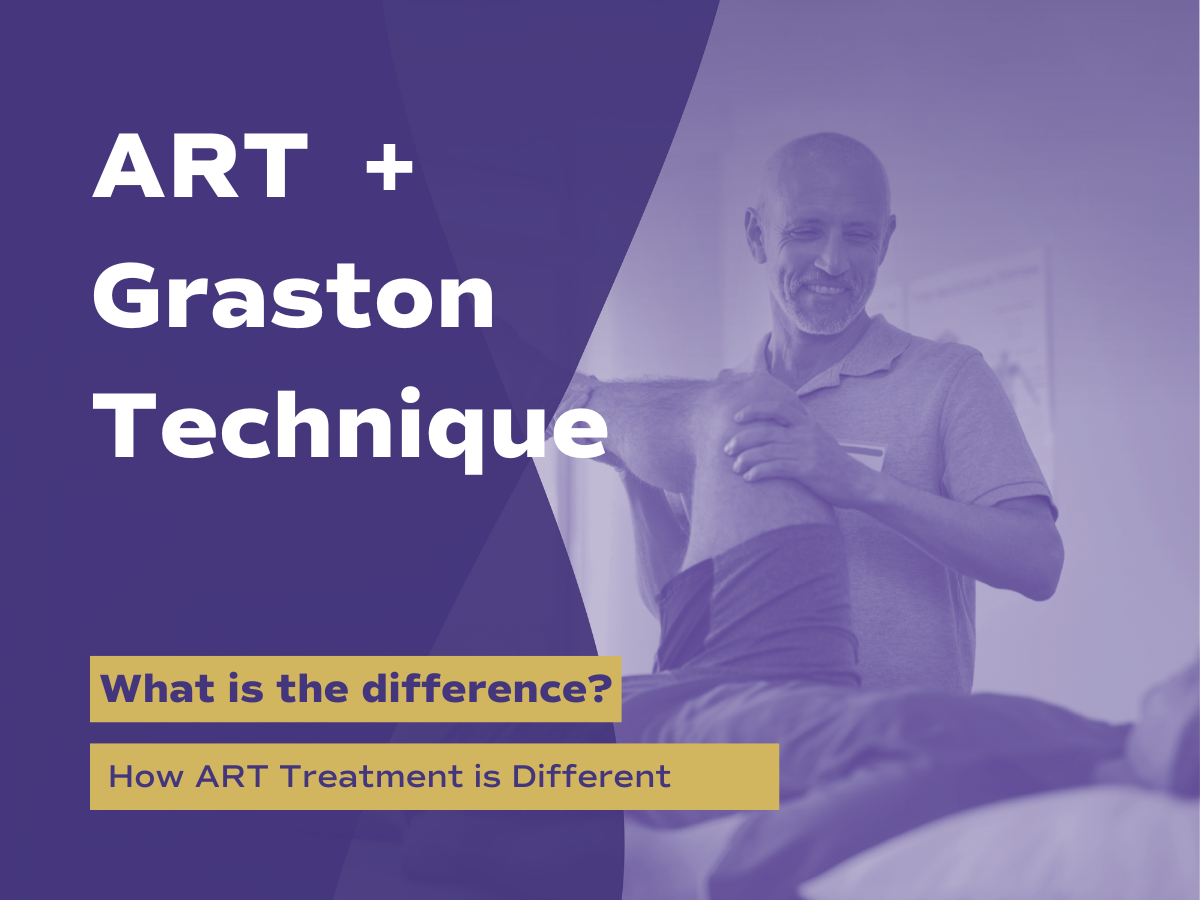What’s the Difference? ART and Graston Technique.
Active Release Techniques® (ART®) and Graston Technique® are both non-invasive soft-tissue therapy methods dedicated to healing soft-tissue conditions. Let’s get into what makes both treatments unique.
What is ART?
ART treatment is a non-invasive system that treats soft-tissue and nerve dysfunction at the source. This hands-on treatment uses a combination of provider touch, depth, and tension with patient movement to pinpoint and treat the origin of the affected area.
What is the Graston Technique?
The Graston Technique, developed by David Graston, uses a set of stainless-steel instruments to assist in healing soft-tissue. The affected area is massaged and the instruments are used to break down scar tissue and fascial restrictions. The tools are used to slowly twist and massage into the skin.
What causes soft-tissue damage?
Soft-tissue damage to muscles, ligaments, and tendons can be caused by everyday movements, sports injuries, blunt forces, and overused muscles. Common signs of soft-tissue damage include:
- Sprains
- Bruises
- Tendonitis
- Bursitis
- Stress injuries
- Strains
What causes fascial restrictions?
Fascial restrictions are tense and tight areas in the body’s connective tissue, known as fascia. Over time with induced stress or injury, fascia can lose its flexibility and become tightened. Common causes of fascial restrictions include:
- Scar tissue
- Repetitive motion
- Surgery
- Poor posture
- Trauma
- Disease
- Inactivity
- Inflammation
How are the treatments different?
ART treatment
ART treatment requires the patient to perform test movements for a provider to find the source of pain or limited range of motion. ART Certified Providers use the psychomotor skill of touch to help locate and treat soft-tissue and nerve damage. Once the source of the problem is found, providers use pressure, tension, and directed patient movement to free the tissues.
Graston Technique
Besides using medical instruments to assist in the healing process, the Graston Technique focuses on scar tissue and fascia restrictions to increase function. Ultimately, fixing the structure of the affected soft tissue.
Are there similarities?
ART treatment and the Graston Technique both break up adhesions to restore range of motion and diminish pain. After these treatments, blood flow and collagen are increased.
What conditions do they treat?
ART treatment
ART treatment can be used to treat a wide range of dysfunction from sports injuries to overuse caused by everyday movements. See below for the soft-tissue conditions ART is used to treat:
- Back pain
- Carpal tunnel syndrome
- Joint pain
- Numbing sprains
- Lockjaw
- Strains
- Foot pain
- Migraines
- Shoulder pain
- Sciatica
- Repetitive stress and overuse injuries
Graston Technique
Graston Technique treats pain in the wrists, ankles, neck, back, knees, heels, shoulders, and hips. Other conditions include:
- Fibromyalgia
- Trigger finger
- Hamstring injuries
- Scar tissue
- Post-mastectomy
- Cesarean scarring
The takeaway
Both ART and the Graston Technique were created to improve the rehabilitation process for patients. These treatments are very different in approach, but they stem from wanting to see improvement in medical treatment processes. Both have rigorous training and only certified providers can practice the techniques.
